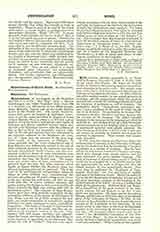

Hypsistarians, or worshippers of the Hypsistos (upsistos), i.e. of the “Most High” God; a distinct Jewish-pagan sect which flourished from about 200 B.C. to about A.D. 400, mostly in Asia Minor (Cappadocia, Bithynia, Pontus) and on the South Russian coasts of the Euxine Sea. The names upsianistai, upsianoi first occur in Gregory of Nazianzus (Orat., xviii, 5) and the name upsistianoi Gregory of Nyssa (Contra Eunom., II), i.e. about A.D. 374, but a great number of votive tablets, inscriptions, and oracles of Didymos and Klaros establish beyond doubt that the cult of the Hypsistos (upsistos, with the addition of Theos or Zeus or Attis, but frequently without addition) as the sole and supreme God was widespread in the countries adjacent to the Bosphorus (cf. Acts, xvi, 17, “these men are servants of the most high God “—oracle of the pythonissa at Philippi). It seems probable that the native Cappadocian cult of Zeus Sabazios was deliberately merged in the cult of Jahve Sabaoth practiced by the numerous and intellectually predominant Jewish colonies, and that associations (sodalicia, thiasoi) of strict monotheists were formed, who fraternized with the Jews, but considered themselves free from the Mosaic Law. The importance and exalted ideas of these associations can be gathered from the fact that when someone asked Apollo of Klaros whether the Hypsistos alone was without beginning and end, he answered: “He is the Lord of all, self-originated, self-produced, ruling all things in some ineffable way, encompassing the heavens, spreading out the earth, riding on the waves of the sea; mixing fire with water, soil with air, and earth with fire; of winter, summer, autumn, and spring, causing the changes in their season, leading all things towards the light and settling their fate in harmonious order.” The existence of these Hypsistarians must have been partially responsible for the astounding swiftness of the spread of Christianity in Asia Minor, yet not all of them accepted the new faith, and small communities of monotheists, neither Christians nor Jews, continued to exist, especially in Cappadocia. The father of Gregory of Nazianzus belonged to such a sect in his youth, and they are described in his panegyric written by his son. They rejected idols and pagan sacrifices, and acknowledged the Creator (pantokrator) and the Most High, to whom however, in opposition to the Christians, they refused the title of “Father”; they had some superstitions in common with the Jews, their worship of fire and light, the keeping of the Sabbath, the distinctions of food, but circumcision they rejected. No doubt Persius had Hypsistarians in view when he ridiculed such hybrid religionists in Satire v, 179-184, and Tertullian seems to refer to them in “Ad nationes”, I, xiii. The statement that Hypsistarians continued to exist till the ninth century, is based on a mistaken interpretation of Nicephorus Const., “Antirhet. adv. Const. Copr.”, I, in Migne, P.G., col. 209. Hypsistarians are probably referred to under the name Coelicola in a decree of the Emperors Honorius and Theodosius (A.D. 408), in which their places of worship are transferred to the Catholics.
J. P. ARENDZEN

